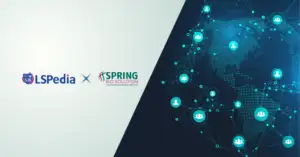The consumption of therapeutic products is meant for a particular objective. Along with their effectiveness in the treatment of a specific illness, they should be safe for intake. The aspect of safety is not only for the available medications in the market but also for the developing medications and the ones in different developmental stages. For the attainment of this goal, pharmacovigilance and regulatory affairs work together closely. The task of regulatory affairs is to create, implement, and oversee regulations for ensuring that drugs follow the quality standards and safety protocol, while pharmacovigilance focuses on the recognition, assessment, understanding, and prevention of adverse reactions and other drug-based safety and safety issues related to the product quality. An important role is played by regulatory affairs in the compliance of a drug by making sure that pharmaceuticals meet the required regulatory and legal requirements. Experts work in this ground for navigating regulatory models complex in nature, infer guidelines, and certify that all features of the development of a drug, testing, and promotion follow stringent standards. Their proficiency necessitates the achievement and maintenance of regulatory consents, performing clinical trials globally, and remaining up to date with the advancing regulations for ensuring the pharmaceutical’s quality, efficacy, and safety.
The collaboration between Pharmacovigilance (PV) and Regulatory Affairs (RA) has been illustrated through various examples, such as the case of thalidomide. In this instance, PV played a pivotal role in recognizing the drug’s teratogenic effects, which resulted in severe congenital disabilities in children born to mothers who used the drug. Subsequently, RA took decisive action by withdrawing the drug’s approval and implementing more rigorous regulations for drug approval processes.
Global trials are governed by the regulations pertaining to pharmacovigilance whose objective is examining and evaluating the safety of drugs throughout the process of development. Few of the important attributes of regulations in pharmacovigilance are outlined below:
Requirements of Reporting:
- Adverse Reactions: Firms of pharmaceuticals are obliged to report to regulatory authorities of any aftereffects or adverse events in association with their medications. Regulatory authorities as well as committees of ethics must be informed of any adverse reactions of the drug developing from trial studies.
- Periodic Safety Update Reports: PSURs must be submitted by manufacturers of pharmaceuticals at definite time periods for providing a broad overview of the profile of the safety of the drug.
- Risk Management Plans: RMPs are developed by manufacturers of pharmaceuticals for the recognition, classification, and depreciation of risks in relation to their medications. These plans are updated throughout the drug’s lifecycle.
Signal Detection and Management:
- Signal Detection: Regulatory agencies continuously monitor incoming data for signals of potential safety concerns.
- Signal Management: Once a signal is identified, agencies and companies investigate further to confirm or refute the concern. If validated, appropriate actions are taken.
Good Practices of Pharmacovigilance:
- Minimization of Risks: Approaches for risks minimization pertaining to medications, includes restriction in distribution, registries of patients, and programs on education.
- Assessment of Benefits and Risks: Constantly assessing the benefits of a drug versus its risks for ensuring that the benefits of the drug be greater than the possible harmfulness.
- Systems of Quality: To oversight activities of pharmacovigilance of the greatest standards it is necessary to have strong systems of quality. A special cell of pharmacovigilance has to be created so that the manufacturers of the drug can gather and progress the adverse events reported and deliver the reports updated to undertake suitable actions.
Legal Framework:
- International Conference on Harmonization: The guidelines for the practices on pharmacovigilance are provided by the ICH which are identified worldwide.
- European Medicines Agency: In the union of Europe, the pharmacovigilance principles are taken care of by the EMA comprising of the system of EudraVigilance.
. FDA (U.S. Food and Drug Administration): The FDA mandates pharmacovigilance activities for drugs approved in the United States, such as adverse event reporting through the FAERS system.
Clinical Trials:
- Post-Marketing Surveillance: Continuing the drugs examination after reaching the marketplace.
- Trials in Fourth Phase: After getting necessary approvals for the collection of more data on safety, quite a few of the medications need further trial studies.
Interaction:
- Interaction with Health Experts and Patient Population: Updating health experts and patient population on the novel updates of safety.
- Publications: The manufacturers of pharmaceuticals have the necessity to publish information on safety in medical publications and any other podiums.
Inspections and Compliance:
- Examinations: Authorities of regulatory bodies inspects for ensuring in accordance with regulations of pharmacovigilance and reporting has been 100%.
- Prosecution Activities: Nonadherence to regulations can lead to threats, penalties, or also the removal of a drug from the marketplace.
Digitalization:
- Reporting Electronically: Several regulatory bodies nowadays need the submission of the data safety electronically.
- Data Mining: Methods of data mining are used for the identification of prospective signals of safety obtained from big databases.
The pharmacovigilance policy protects the effectiveness and safety of medications. The guarantee of rigorous safety of the patient’s populace in the worldwide trials is kept by pharmacovigilance. There may be differences country wise and region wise in the regulations but normally it is required to report (ADRs) adverse drug reactions including any complex adverse events. In conclusion, adhering to pharmacovigilance regulations enables the drug manufacturers to guarantee their drugs safety along with the maintenance of a patient’s and health provider’s faith.





